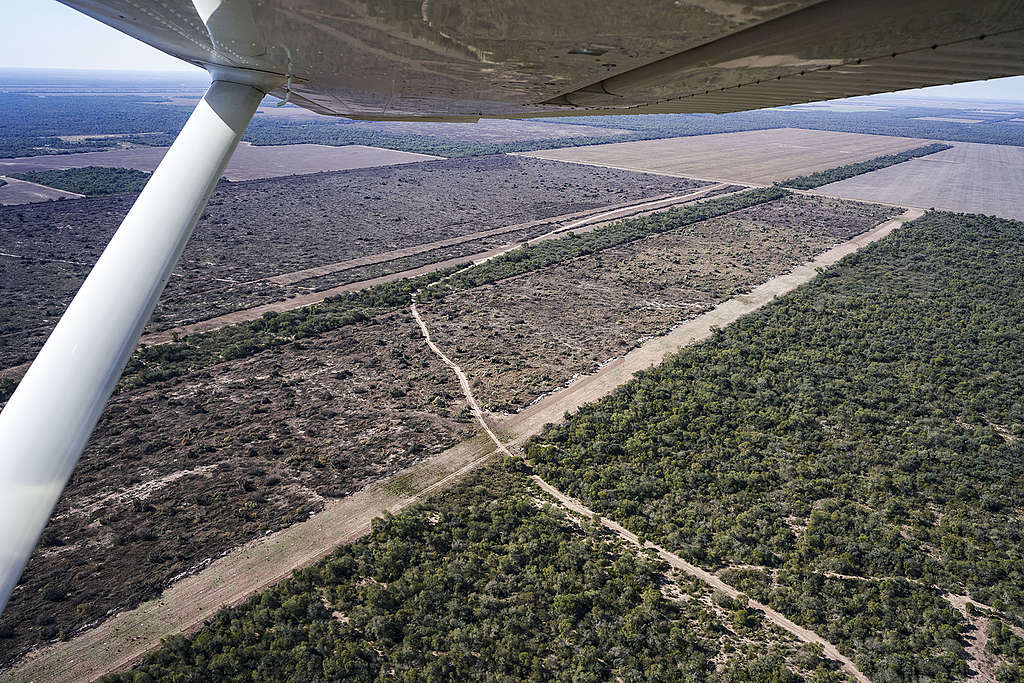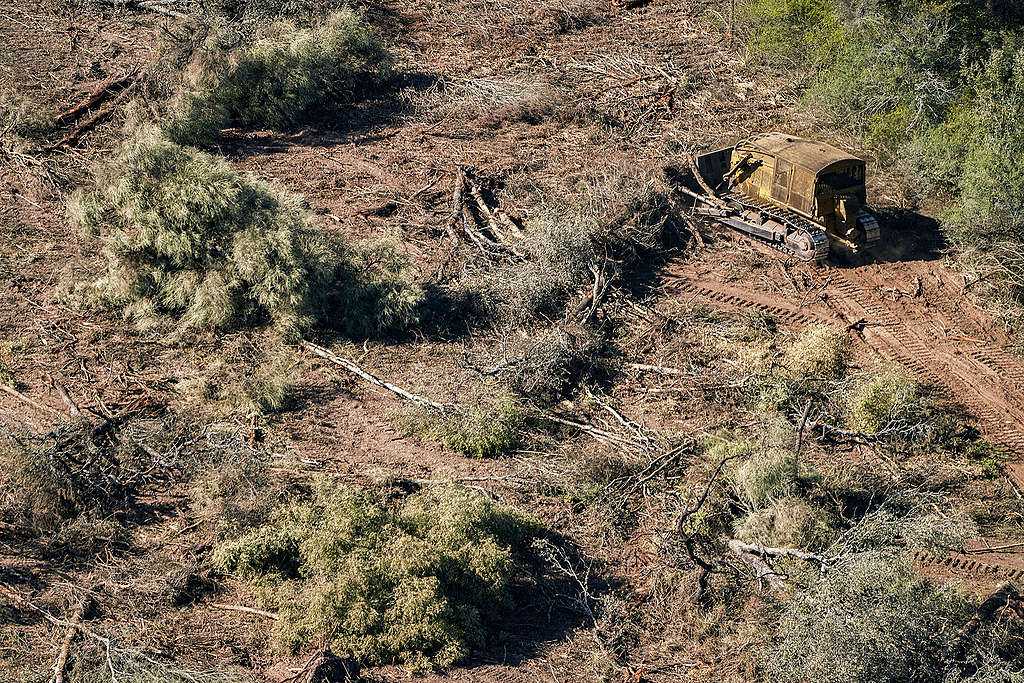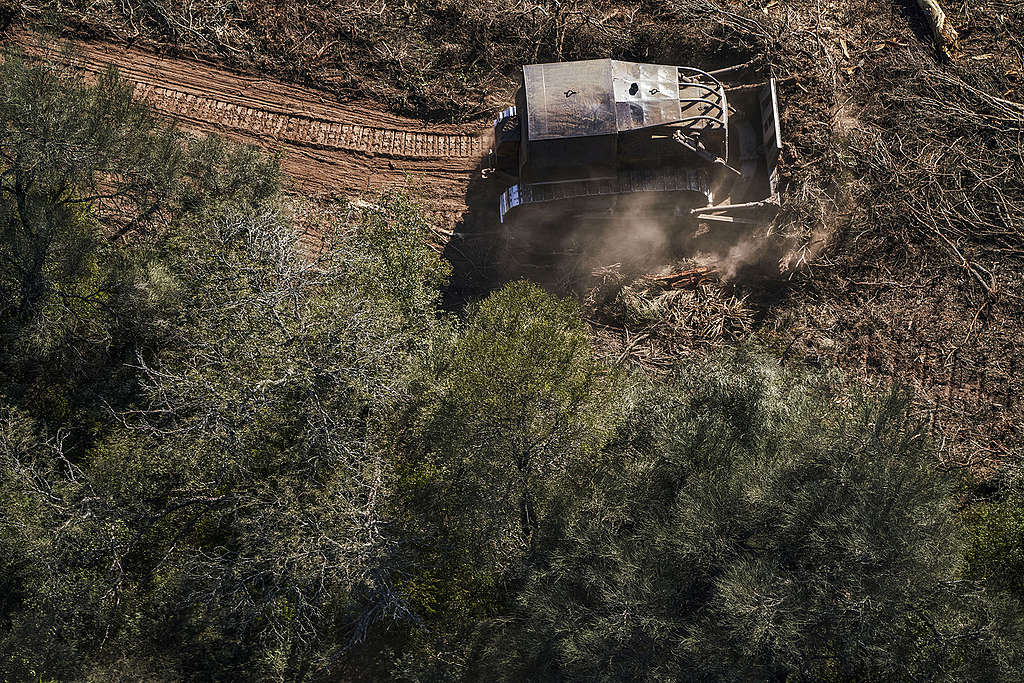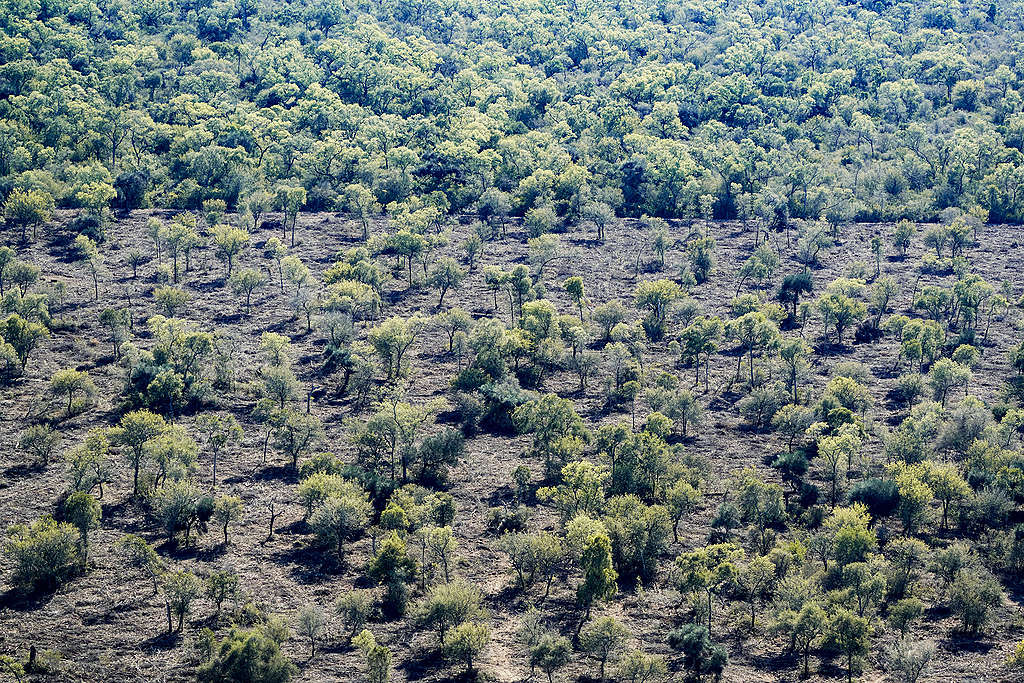Illegal deforestation in the Gran Chaco forest region continues. A Greenpeace Argentina team conducted an overflight last week and discovered unlawful deforestation in the Chaco province of Argentina.

The deforestation of 10,329 hectares was detected by comparing
satellite images from November 2020 to July 2021. Greenpeace aerial
images from July also show bulldozers in operation, with forest
destruction recorded in at least 10 places in the province.
All of this illegal forest clearing is occurring despite the November 2020 ruling of the provincial government
suspending such activity for the Chaco province, part of the Gran Chaco
forest region in South America. The suspension of clearing was supposed
to be a temporary solution but has not stopped deforestation. What is
really needed is an update to Argentina’s Territorial Ordinance of
Native Forests — and enforcement of the law.
Why this matters
The Gran Chaco is the second largest forest ecosystem in South America, after the Amazon. Divided amongst Argentina, Paraguay, Bolivia, and a small part of Brazil, the Gran Chaco is home to 3,400 plant species, 500 bird species, 150 mammals, 120 reptiles, and 100 amphibians. There are also more than 4 million people living in the region, around 8% of whom are Indigenous People depending on the forest to obtain food, water, lumber, and medicine.
Similar to that of the Amazon, clearings and logging with the Gran Chaco forest are driven by industries seeking to secure land for agricultural and livestock production, mostly for export to China and Europe. However, deforestation worsens climate change and generates extreme events, such as droughts and severe storms.
In the Argentine Chaco, there are around 200,000 native dwellers from nine Indigenous Peoples groups (most of them Wichi and Qom). Yet, according to Greenpeace Argentina monitoring, deforestation in the Salta, Chaco, Formosa, and Santiago del Estero provinces (Gran Chaco region of Argentina) was 44,815 hectares between January – June 2021 and more than 6 million hectares in the past 30 years.

And when we talk about deforestation, we are not only talking about loss of biodiversity, but also about the destruction of the home and livelihood of Indigenous People. Indigenous communities have also denounced the clearing and the advances on their territories.
According to data from the Argentina Ministry of the Environment, Chaco was the province with the greatest loss of native forests between 2016 and 2019, with 130,487 hectares deforested. For its part, Greenpeace satellite monitoring detected that, despite the restrictions imposed by the COVID-19 pandemic, 13,128 hectares of forests were lost in the province during 2020.

How we must act
The floods and droughts that hit the Chaco every year increase as deforestation progresses, leaving no doubt that the current health, climate and biodiversity crisis in which we find ourselves will only increase with increased deforestation and should force us to act accordingly.
Any suspensions of clearing cannot be carried out with success while deforestation is still being promoted by those putting profits over people. Upholding of the current suspension requires a collaborative process with Indigenous expertise and the objectives of ending forest clearing, sustainable management, and restoration of native forests.
Any forest destruction cannot be tolerated as clearings are a crime and must be fully banned now, before anymore damage can be done.

about the author
Gaby Flores
Gaby Flores is a content editor for Greenpeace International based in New York.

No comments:
Post a Comment
Note: Only a member of this blog may post a comment.